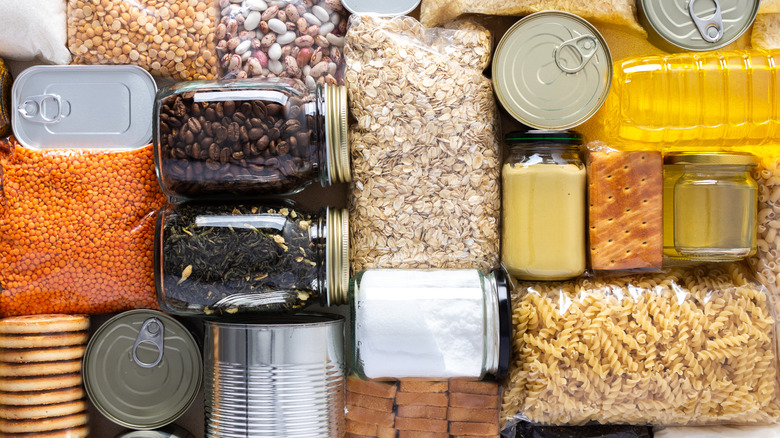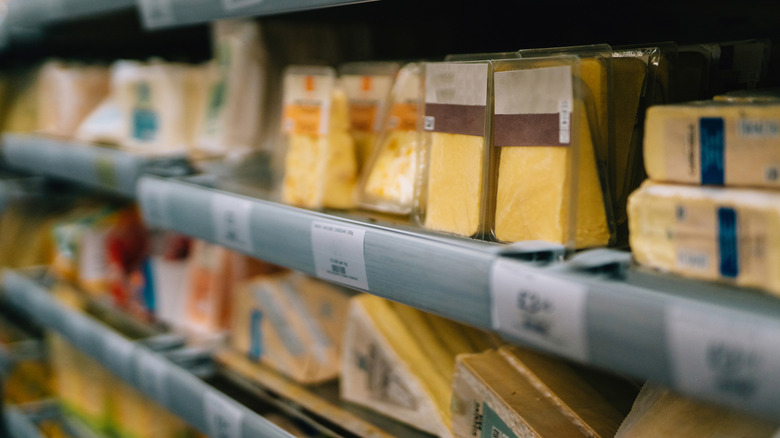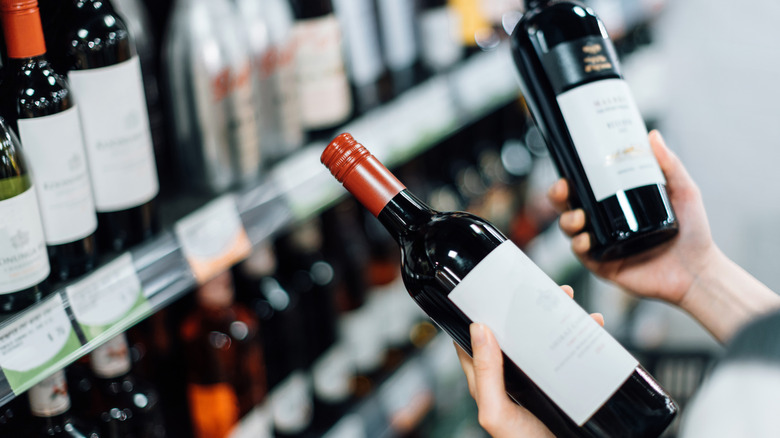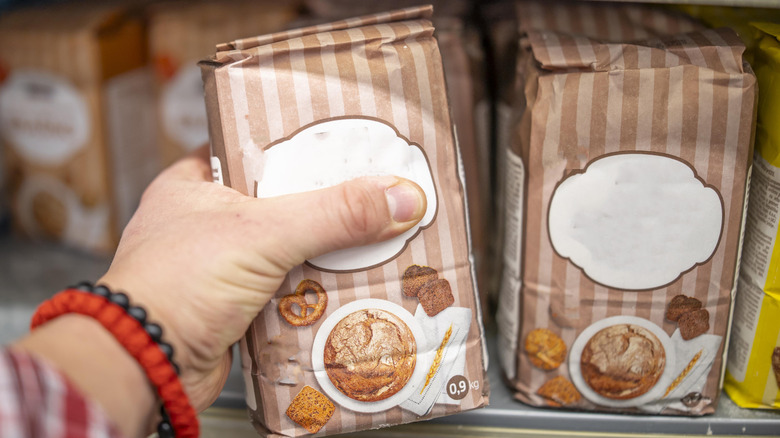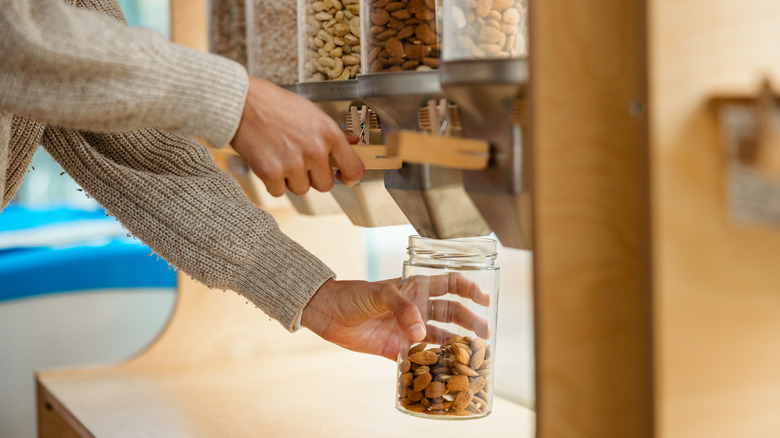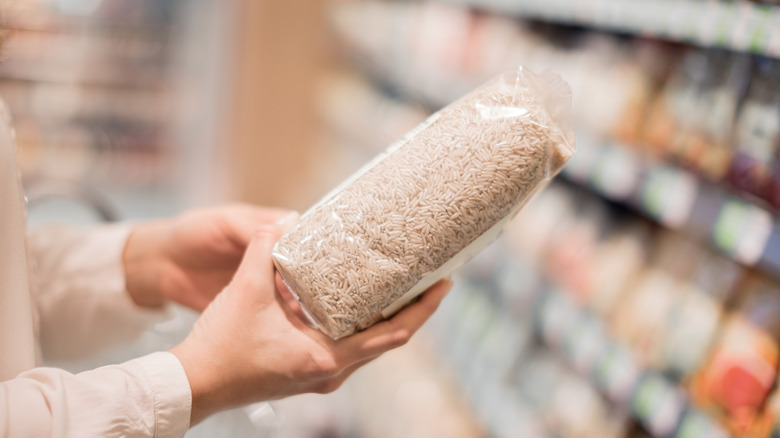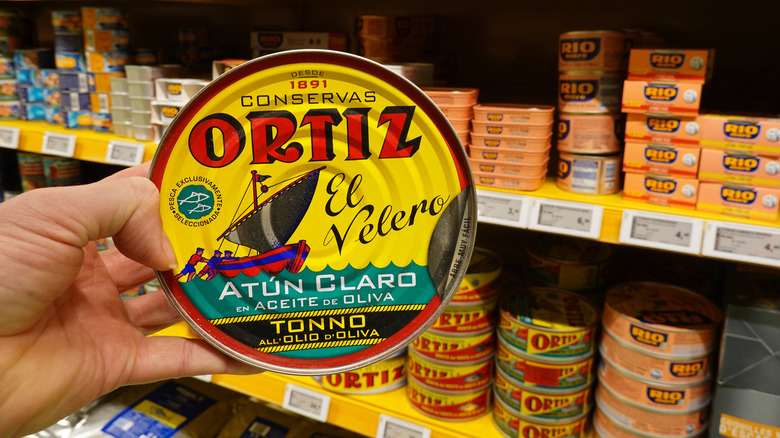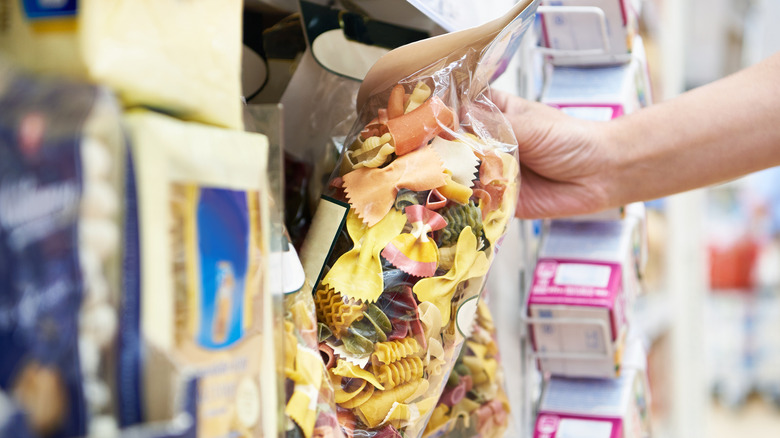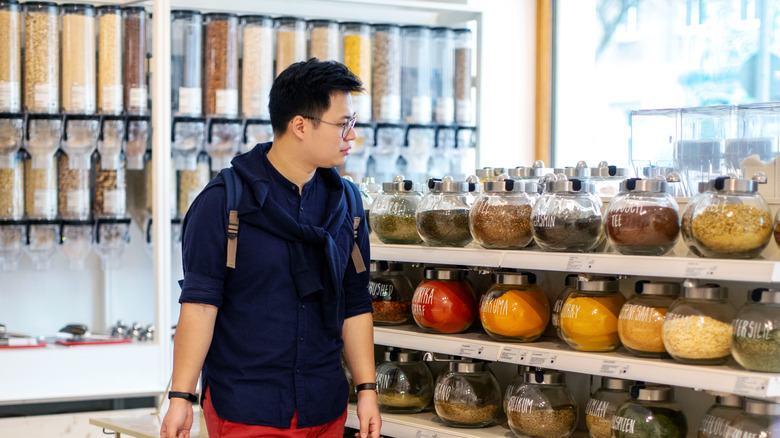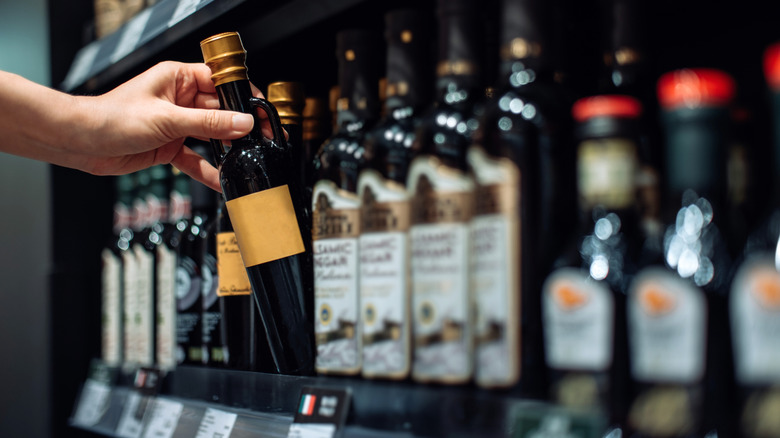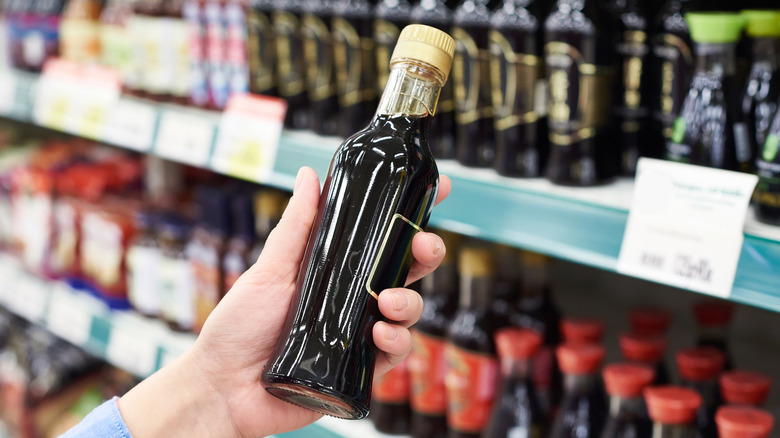15 Pantry Essentials To Buy Now Before They Possibly Jump In Price
If you've felt a sting at the checkout line lately, you're not alone. Behind the scenes, new U.S. tariffs on imported goods are acting like a stealthy tax, one that is destined to directly impact the cost of essential pantry staples. The complex journey from a port to a shelf means it's rarely obvious how or when these increases will appear on your grocery bill, but the outcome is inevitable: higher prices on everyday food products. That perfect cup of coffee that fuels your morning and that fruity olive oil that makes your favorite pasta pop may soon become more expensive indulgences, prompting savvy shoppers to stock up now.
This guide will cut through the uncertainty, highlighting the categories — from premium oils and beverages to spices and condiments — most likely to be affected. It starts with understanding basic economic forces at play. Tariffs are a cost retailers simply can't eat due to tight profits, so the consumer pays the price. That initial hike is then inflated further by soaring costs on everything from steel cans to the diesel that fuels the cargo ship. But knowledge is power. By understanding what's ahead, we can make strategic choices today (and even employ a few mindful storage hacks) that lead to significant savings tomorrow. Consider this your playbook for building a resilient pantry without sacrificing an ounce of flavor.
Olive oil
It's not your imagination: that favorite bottle of extra virgin olive oil is almost certainly more expensive than it was last year. A perfect storm of factors is driving the cost of premium olive oil to new heights. A punishing drought in Spain has decimated harvests for a second year, creating a severe supply shortage right as global demand remains strong. Compounding the problem are tariffs on all EU imports, which act as a direct surcharge on every bottle that arrives on American shelves. This price volatility has a dark side: it increases the risk of adulterated or fake olive oil hitting the market as suppliers struggle to meet demand.
Consider buying trusted, high-quality bottles now before prices climb further, or consider reasonable substitutes with character like avocado oil. Remember that proper storage is key to protecting your investment. Keep cooking oil in a cool, dark place to prevent rancidity. Look for seals like PDO or PGI, and get familiar with reliable brands. Your future pasta dishes will benefit from the foresight.
Dairy products
Trade tensions are poised to take a bite out of your favorite imported cheeses, premium butters, and other dairy products. Popular European varieties like Parmigiano-Reggiano and Irish butter face immediate price pressure from active tariffs and a high risk of retaliatory duties. Tariffs under review on Canadian dairy, including milk and yogurt, also threaten to disrupt another essential source for the domestic market.
For the discerning cook, this makes those beloved imports a top priority to stock up on now. Look for protected designations of origin (like PDO or AOP) on cheese and a high butterfat content (82% or more) in butter for superior quality that justifies the cost. Now is also a great time to explore the world of American creameries at your local grocer or farmer's market. You'll find exceptional dairy products that stand up to their foreign counterparts, often with compelling origin stories and no import tariffs to drive up the cost.
To extend the life of your cheese and butter, wrap them in specialty cheese paper or parchment paper, and store them in the fridge's cheese drawer. While milk and yogurt are more perishable, you can freeze both and use them for baking purposes. Or get creative: Freeze milk in ice cube trays for quick smoothies or strain yogurt to make labneh that can be preserved in olive oil.
Wine
Whether for sipping or cooking, wine plays a role in a well-stocked pantry, and it makes this list due to its high exposure to foreign tariffs. A steep duty on European imports is already elevating prices for cherished bottles from iconic regions like Veneto in Italy. Nations without a free trade agreement face the highest baseline tariffs, while others with limited or even full agreements will face increased duties.
For the savvy sipper, this means the time to invest is now. Prioritize bottles with strong aging potential, like classified growth Bordeaux, which will retain or grow in value. In the meantime, enjoy those young Proseccos now before prices climb. Don't overlook outstanding New World wines from domestic regions like Willamette Valley, which deliver Old World elegance without the tariff premium. For everyday cooking, shift to value-driven American-made wines.
As any connoisseur would insist, proper storage is a non-negotiable for protecting your collection. Keep bottles in a cool, dark place with consistent temperature (around 55 degrees Fahrenheit) and humidity, laying them on their side to keep corks moist. These days, a well-curated wine rack is a practical hedge against rising prices.
Tomato products
The average American shopper consumes over 30 pounds of tomato products each year, according to the United States Department of Agriculture – a statistic that underscores just how central this versatile fruit is to our diets. New tariffs on imports from Mexico and Italy – including steel and aluminum — threaten to drive up the cost of canned goods we rely on for the best basic tomato sauce. But it's not only tariffs: Extreme weather has reduced tomato yields, tightening supply and pushing prices upward even before politics enter the equation.
Since tomato products like paste, crushed, and whole are packaged in metal containers, they're doubly vulnerable, facing potential duties on both the contents and the cans themselves. This could mean sharper price increases for private-label or specialty brands (yes, that means those beloved San Marzanos and Corbara brands) compared to larger national labels with fixed contracts.
The good news? Canned tomatoes have a long shelf life, about two to three years when stored in a cool, dark, and dry place. This makes preserved tomatoes one of the smartest items to stock up on now.
Specialty flours
That bag of Italian 00 flour that turns pasta dough smooth and silky or the French T55 that gives pastries their delicate crumb is about to become a little more precious. Even all-purpose flours are vulnerable, as many conventional brands blend domestic and imported wheat to ensure consistent quality. With new tariffs targeting EU imports and potential trade restrictions looming with key wheat suppliers like Canada, Mexico, and China, bakers at every level should prepare for a period of increased prices and market volatility.
Fortunately, there's a growing number of domestic mills that produce exceptional stone-ground and heritage wheat flours that rival their European counterparts in quality. This might also be a good time to consider flours made from alternate ingredients, such as chickpea and sorghum. But if your carefully cultivated sourdough relies on specific imported favorites, now is the time to buy.
For long-term storage, keep flour in airtight containers in a cool, dark place to protect it from moisture, odors, and pests. Stored properly, flour will keep for up to a year, or throw in an oxygen absorber to extend its shelf life even further.
Premium coffee and tea
Your critical morning cup of coffee or afternoon tea? It's likely to get more expensive. Premium coffee and tea – especially single-origin beans from regions like Brazil and artisanal tea leaves from Asia — face disproportionate tariff impacts compared to commercial-grade products. These high-end imports are particularly vulnerable to escalating trade barriers and supply chain pressures, with coffee estates further compounded by "weak crop yields."
Thankfully, the rise of exceptional domestic roasters and tea blenders offers promising alternatives to pricey imports. Even mushroom coffee is trending! Keep an eye out for improved regulation on Hawaiian coffee, emerging coffee production from California, and innovative tea growers across the States. Trust that your daily moment of peace will not be interrupted.
When selecting coffees and teas to cellar, prioritize whole bean coffee over pre-ground and opt for loose-leaf tea rather than bagged varieties. For optimal storage, vacuum-seal coffee beans in portions to freeze, protecting them from moisture, odor, and oxidation, while tea should be kept in opaque, sealed tins away from light and heat.
Chocolate products
Facing a triple threat of circumstance, chocolate products are poised to become one of the pantry's most vulnerable luxuries. A combination of new EU tariffs on imported chocolate, severe climate-driven cacao shortages, and ongoing supply chain disruptions has pushed cacao prices to historic highs. With Ivory Coast and Ghana, which together produce 70% of the world's cacao, reporting dramatically reduced harvests, and tariffs impacting key ingredients like Indonesian cacao butter, shoppers should expect significant price increases on quality bars, baking chocolate, and cacao powders.
There's no reason chocolate lovers can't buy now to indulge later. Prioritize high-percentage dark chocolate, which has a longer shelf life than milk and white varieties, and consider exploring domestic craft chocolate makers who source outside West Africa.
When storing chocolate, keep it in a cool, dark place (around 60-65 degrees Fahrenheit) in airtight containers to prevent bloom and flavor loss. A quick test will indicate the quality of the chocolate, and even if it blooms, you can use it for baking or to coat your favorite cake.
Nuts and seeds
Those nuts and seeds that fuel your go-to snacks and power bites are getting noticeably more expensive. The culprit is a mix of tariffs on a variety of nuts, like South African macadamias and Vietnamese cashews, and climate chaos wilting yields in other regions, particularly South American chia seeds. This convergence of trade and climate pressures means the cost of crunch is going up.
Fortunately, this is one category where a little strategy goes a long way. Buying raw, in-shell nuts in bulk remains one of the most cost-effective moves, while exploring domestic alternatives like pecans from the South or sunflower seeds from the Plains states can sidestep import hurdles altogether.
When it comes to storage, don't let your squirrel haul spoil; keep in mind that the high oil content in nuts and seeds makes them prone to turning rancid. Tuck them in air-tight containers in cold storage, or vacuum-seal larger portions. A small handful of nuts and seeds packs a big punch, so rest easy: your morning ritual of chia-packed overnight oats is safe.
Specialty rice
That fragrant jasmine rice from Thailand, delicate basmati from India, or the starchy Italian carnaroli essential for risotto are all in the crosshairs of export restrictions and new tariffs. While India's ban on non-basmati white rice has been lifted, the disruption rattled global markets, and new U.S. tariffs on EU and Asian imports could renew pressure on prices.
On the practical side, rice is one of the most shelf-stable pantry items you can stock. Opt for aged varieties, such as those stated above — they hold texture and aroma longer and can improve with time. If your favorite variety becomes scarce or costly, remember that domestic Carolina Gold, Wehani, or even short-grain Californian rice can deliver stunning quality while supporting regional growers.
Keep all rice in airtight, hard-sided containers in a cool, dark place. While white rice can last for years, brown rice has a higher oil content that limits its shelf-life to about six months, or longer when stored in the freezer. This is a great time to master the method of cooking tender brown rice.
Canned fish and seafood
Forget the old stereotype of dusty pantry desperation – tinned fish is having a well-deserved moment, even if tariffs risk its reputation again. Those precious tins of Portuguese sardines and reliable cans of tuna from across Asia are facing a squeeze from rising metal costs and new duties on seafood imports. This one-two punch means your favorite affordable, high-quality protein is poised to become a pricier luxury.
Think like a Mediterranean nonna who knows that well-stocked shelves are a form of culinary insurance. Prioritize longer-dated tins, whose robust preservation methods and sturdy packaging often mean superior flavor and longevity. When storing, keep cans in a cool, dry place away from light, and once opened, transfer any leftovers to an airtight container in the fridge and consume within a few days.
Pasta
The future of Italy's finest pasta on American shelves is hanging in the balance. Despite tariff uncertainty, the industry is bracing for impact. As Cristiano Laurenza of Unione Italiana Food explained to Il Sole 24 Ore, U.S. anti-dumping and anti-subsidy duties are just one part of the issue. The greater fear is potential EU countermeasures targeting high-quality domestic durum wheat, which could disrupt supply chains and inflate global prices for everyone, creating a domino effect that reaches even domestic producers.
If you have a favorite Italian pasta brand, this is the time to buy an extra box or two. Stock up on longer-dated packages of bronze-cut gems, indicated by a rougher texture and richer color than machine-cut varieties, usually in the form of spaghetti, fusilli, and fettuccine. This is also a great time to explore exceptional domestic alternatives.
Store dried pasta in a cool, dry place in airtight containers to protect it from moisture and pests. It will maintain quality for years if stored correctly. This means your weeknight pasta rotation remains in play.
Spices
The ancient spice trade was the first economic bridge across hemispheres, one that is still shaping empires and economies. These days, this now-global journey is complicated by tariffs, climate volatility, and fragile supply chains. As trade policies target key producers including India, Indonesia, and Madagascar, spices like cinnamon, black pepper, and vanilla are met with heightened risk of shortages and price spikes. Yet not all hope is lost: Major importers are actively diversifying sources, and some spices may yet secure exemptions.
Now's your chance to channel the tactics of an early spice trader by taking into account origin, quality, and longevity of your spice selection. Prioritize whole spices, such as cinnamon sticks, peppercorns, and cardamom pods, which will retain their potent oils and complex flavors far longer than pre-ground versions. Alternatively, you can explore domestic spices like Vermont saffron, New Mexican chiles, and small-batch Oregon coriander, which sidestep import hurdles entirely.
When it comes to storage, treat spices like precious commodities: Tuck them in airtight containers away from heat, light, and moisture. A cool, dark drawer is far better than a rack next to your stove. For long-term potency, store whole spices in the freezer or vacuum-seal to remove oxygen.
Liquid sweeteners
That river of genuine syrup you pour on your pancakes? There's a chance your favorite cross-border variety is about to get more expensive. New tariffs on American neighbors, combined with stressed bee populations and global production shifts, are converging to push liquid sweetener prices higher, from Canadian maple syrup to Mexican agave nectar. Per the United States Department of Agriculture, U.S. imports on honey have also surged in recent years, making the market vulnerable to trade disruptions. This category also remains notoriously prone to fraud, with maple-flavored syrups, chemically altered agave, and diluted honey often standing in for the real thing.
Your best defense is to seek out authenticity and think seasonally. Look for the words "100% pure" and "single source" on labels, and consider connecting with local beekeepers or regional maple producers whose products bypass import channels entirely. Learn all you need to know about maple syrup before stocking your pantry. Or visit your local farmer's market to seek out regional honey sources. American-made brown rice syrup is also a suitable substitute for all of these sweeteners, most notably agave nectar.
As for storage, simply keep them in sealed glass containers in a cool, dark cupboard. Honey may crystallize over time, but a warm water bath will effortlessly restore its silky texture. There's no reason not to buy that giant bucket of honey.
Vinegars
While your bottle of domestic apple cider vinegar will likely remain an affordable staple, the landscape for imported vinegar is decidedly sharper. Premium bottles like Italy's cherished balsamic vinegar, Spain's complex sherry vinegar, and China's versatile rice vinegar are subject to stiff tariffs. These levies, stemming from older trade disputes, are now colliding with supply chain pressures and rising glass costs, which puts your favorite finishing ingredient in the crosshairs of inflation.
The workaround is easy: Stock up on imported favorites, and tap into the growing world of American artisan vinegar makers. First, take a crash course on why high-quality vinegar production shares commonalities with wine, or simply consider the range of vinegars available, and then take yourself to a specialty food store. In addition to imported classics, you'll find some stunning oak-aged apple cider, wine, beer and even rice vinegars made from domestic ingredients. Since American artisan makers might suffer the upswing in glass prices, consider using a refillable container to bulk up on supply at a nearby zero-waste store.
Thankfully, vinegar is a preservative itself, making it a perfect candidate for a well-stocked pantry. Store all varieties in a cool, dark cabinet away from direct heat and light to maintain their flavor integrity almost indefinitely.
Condiments
That dollop of Dijon or splash of soy sauce might soon come with a subtle new note: the taste of tariffs. The condiment aisle, long a reliable refuge of affordable flavor, is now subject to the reach of inflation. As new duties target imports around the world, specialty mustards from France, fermented sauces from Thailand and Vietnam, and iconic hot sauces from Mexico and beyond face immediate price pressure, turning everyday flavor boosters into potential luxuries.
But don't fret — this is not our final ode to sriracha. Most condiments are champions of shelf-stability, either in the pantry, or upon opening, in the fridge. Focus your shopping efforts on the tariff-heavy imports you can't live without, and store them in a cool, dark pantry with confidence. As with other pantry categories, you will find a multitude of options made and sourced within the country. You might even consider making your own.

